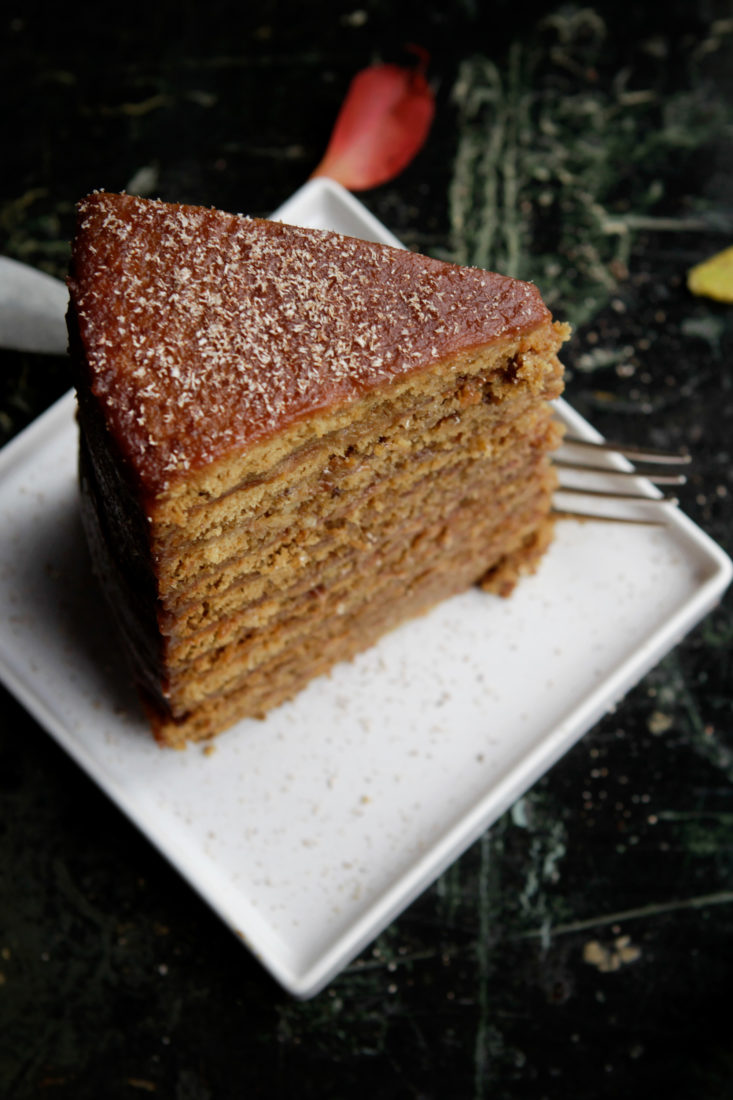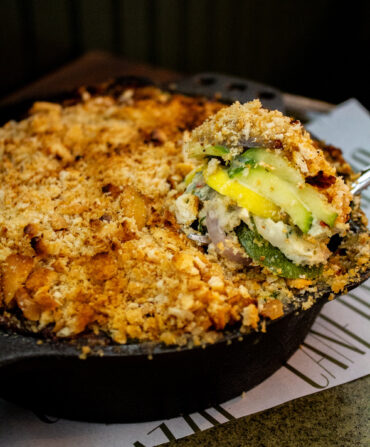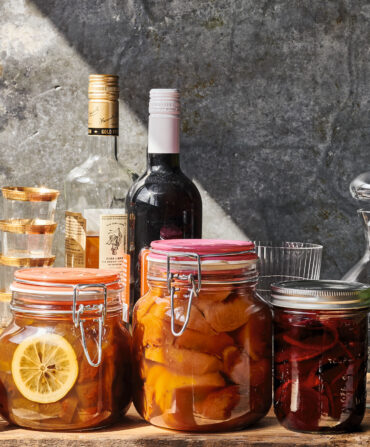Preheat oven to 350°.
Traditionalists can make this in a 10” cast iron skillet, brushed generously with melted butter. For a more modern approach, make the layers in 8” cake pans lined with parchment and lightly greased.
With a hand or stand mixer, the latter fitted with a paddle attachment, cream butter with the brown sugar, gingers, baking soda, and molasses. Beat on medium about 4 minutes; stop halfway to scrape the bowl down. Reduce speed to low, add the eggs one at a time. Once fully incorporated, add the flour all at once, followed by vanilla and buttermilk. Continue mixing on low speed until homogenous. It will look very thick compared to a standard cake batter.
Use 2 cups of batter per 10” skillet, or 1¼ cups of batter per 8” pan. Use an offset spatula to spread the batter into a thin, even layer in each skillet or pan.
Bake until the cakes have puffed and spring back when touched lightly, about 12 minutes for the 10” layers or 10 minutes for the 8” layers. Loosen the cakes by running a knife around the edges of the skillet or pan, then invert onto a wire cooling rack.
If using the cast iron skillet, dust off stray crumbs with a clean towel, brush with fresh butter and refill with batter; you don’t need to wait for the skillet to cool. Bake as before.
With standard layer cakes, you must let the layers cool completely before stacking because the heat of the cake will melt the buttercream. But such is not the case with apple butter, so you can begin stacking the cakes as soon as they are cool enough to handle.
Set the first cake on a serving plate or cake stand. Brush lightly with melted butter. Use an offset spatula to spread ½ cup apple butter over the top from edge to edge. Continue stacking like this, brushing with butter then covering in apple butter. When you reach the last layer, spread any remaining apple butter over the top and sides of the cake.
Slice. Drizzle with cream, and dust with freshly grated nutmeg. Serve warm.
For the apple butter:
(Note: If you’d like to skip the fresh apples, omit them and use 2 pounds of dried apples instead.)
In a large stock pot, combine the apples, dried apples, cider, applejack if using, and vanilla bean pods. The dried apples will absorb the cider and plump considerably, so please use a pot with plenty of room to spare.
Set the pot over medium heat and bring to a simmer. Turn the heat to medium low and simmer, stirring occasionally, until the liquid has reduced by half or more and the apples seem to be swimming in a very thick stew. This could take between two and four hours, depending on the width of your pot, specific heat, and commitment to babysitting the mixture.
When the mixture has become thick, add the reserved vanilla seeds, sugar, salt and cinnamon stick, if using. The sugar will dissolve and return the mixture to a more liquidy state. Continue simmering for about another hour, or until the apples and liquid have become very dark in color and as thick as before you added the sugar.
Now remove the vanilla bean pods (don’t forget to scrape out the apple-y vanilla goo from inside the pod) and cinnamon stick. Puree the apples with an immersion blender, or in a food processor.
Immediately spread over a thick slice of butter-buttered bread, grab a mug of tea, and bliss out.
Transfer the apple butter to jars. Store, refrigerated, indefinitely. (Yields about 6 cups.)








